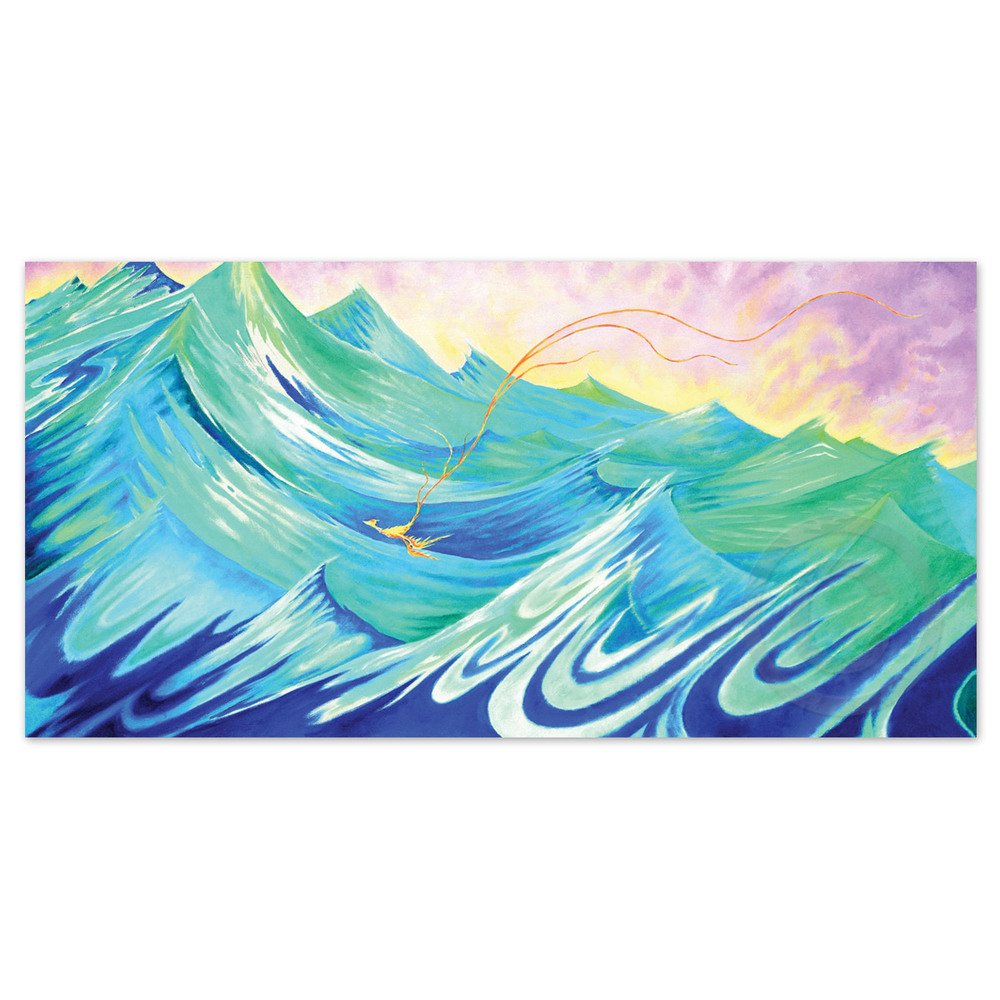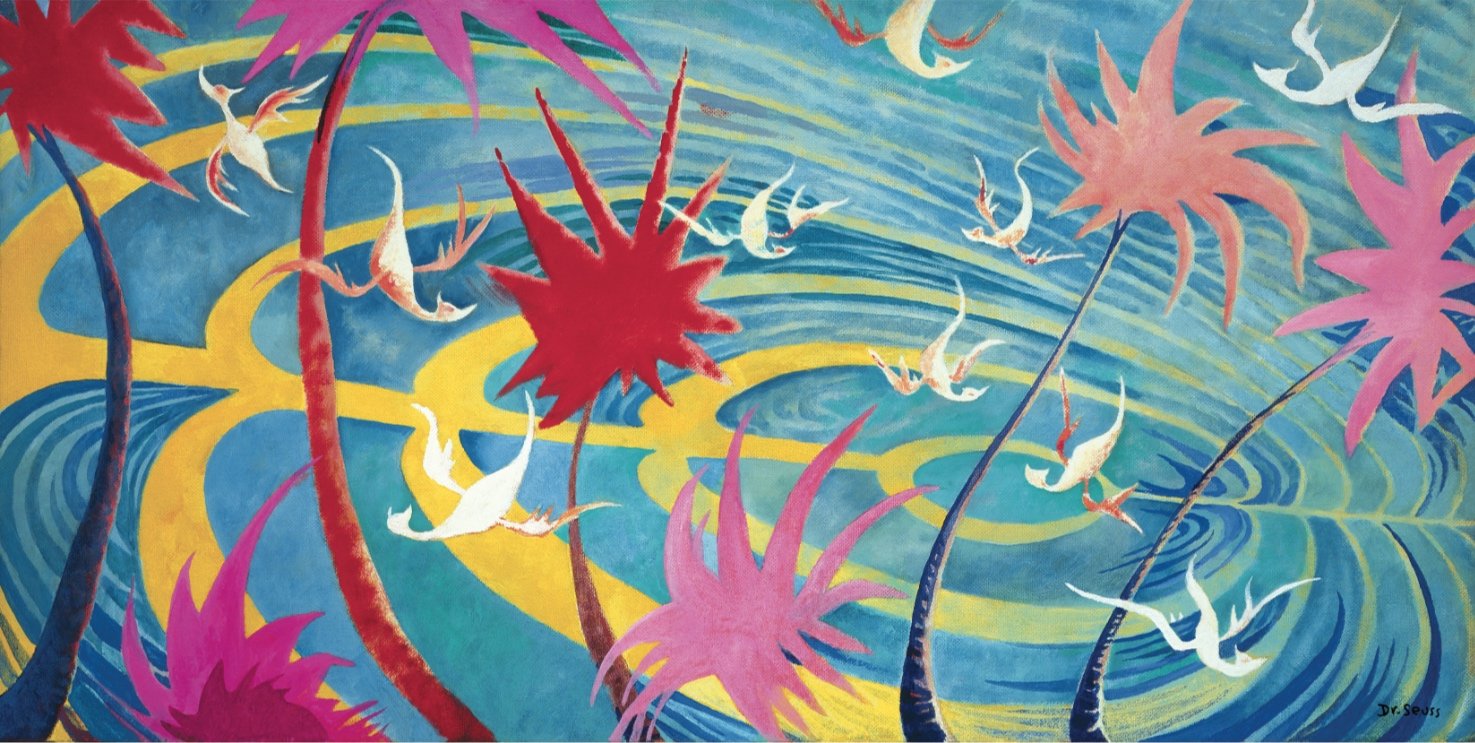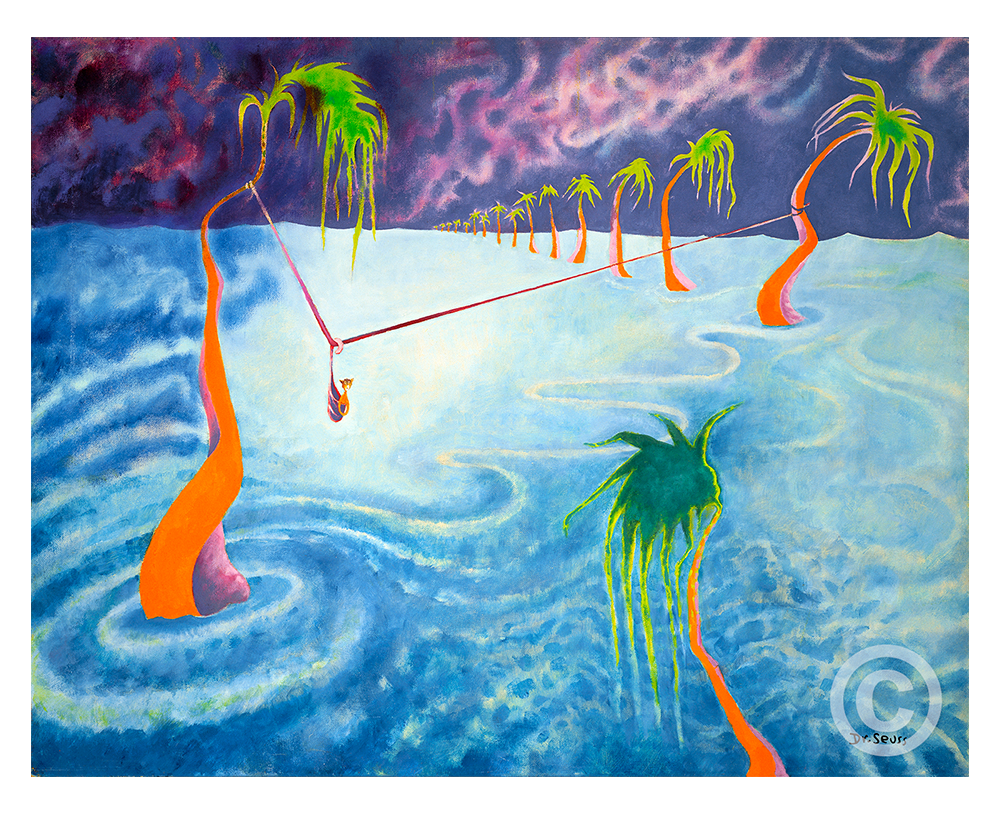“The fascination of flight has gripped us all, from childhood to adulthood and throughout the ages.”
For centuries we have pursued the ability to soar like a bird, wings spread and carried by the wind. Flight represents the unbridled grace of movement and the unrestricted thrill of freedom. To fly unimpeded is a fantasy of surreal proportions and a constant source of inspiration throughout time.
The Birds and the Trees
Mixed Media Pigment Print on Archival Canvas
Dimensions: 22”x 44”
Limited Edition of 850 Arabic Numbers, 99 Patrons’ Collection, 155 Collaborators’ Proofs, 5 Hors d’Commerce, and 2 Printer’s Proofs
Dr. Seuss witnessed the magic of flight firsthand, not only on his travels around the world, but also directly from his studio window. It was there that he watched birds migrate up and down the California coast. He watched the native birds nest within the tropical flora and fauna that populated the hillside on which he lived. The view from his studio inspired his creativity and made its way into countless paintings and book projects throughout his career.
The Birds and the Trees
The Birds and The Trees, circa 1966
By the mid 1960s Ted Geisel, aka Dr. Seuss, had become an international phenomenon. The Grinch, The Cat in the Hat, and Green Eggs and Ham had all been released by that time, consequently ushering Dr. Seuss directly into our pop-culture lexicon.
Ted traveled the world in support of his career, including Australia and New Zealand in 1964. Both countries embraced him and his unique brand of surrealist humor, as it was well aligned with the free-spirited cultures that had emerged in both places. For Ted, the trip brought a great sense of discovery and release. It seemed that the bold lust-for-life quality of those down under made an impression on him, and he would return with a renewed sense of vision that found its way into his paintings.
“One of the most prolific periods of Ted’s painting career emerged in the mid-1960s alongside these formidable experiences. Such iconic works as Freebird and Firebird came to life with a renewed sense of freedom, fantasy, and a lush sense of wonderment. The Birds and the Trees was also painted during this intensely creative moment.”
Oh the Thinks You Can Think!
Roughly 10 years after creating The Birds and the Trees, Ted was facing a physical and creative challenge. His eyesight had begun to fail and that experience shook his creative output. He had shifted to working on the smaller beginner book series and, in 1975, was assembling a book titled “Oh the Thinks you can Think!” He had begun looking back through a collection of his favorite images and ideas to be used in a new context - something he had done his entire career. However, rarely had he adapted a Secret Art painting in its entirety for the page of a children’s book.
“The Birds and the Trees became one of the only known paintings to crossover from his private paintings to his public illustrations. As such, this painting is quite rare and a critical work within the canon of Seuss’s career”
Related Works
Freebird
Serigraph on Archival Canvas
Authorized Estate Edition
Image Size: 22” x 44” with an additional canvas border
Limited Edition of 495 Arabic Numbers, 99 Patrons’ Collection, 155 Collaborators’ Proofs and 5 Hors d’Commerce
Firebird
Mixed-Media Pigment Print on Archival Canvas
Authorized Estate Edition
Image Size: 22” x 44” with additional canvas border
Limited Edition of 850 Arabic Numbers, 99 Patrons’ Collection, 155 Collaborators’ Proofs and 5 Hors d’Commerce
Lonely
Mixed-Media Pigment Print on Archival Canvas
Authorized Estate Edition
Image Size: 24” x 30.5” with additional canvas border
Limited Edition of 850 Arabic Numbers, 99 Patrons’ Collection, 155 Collaborators’ Proofs, 5 Hors d’Commerce and 2 Printer's Proofs










